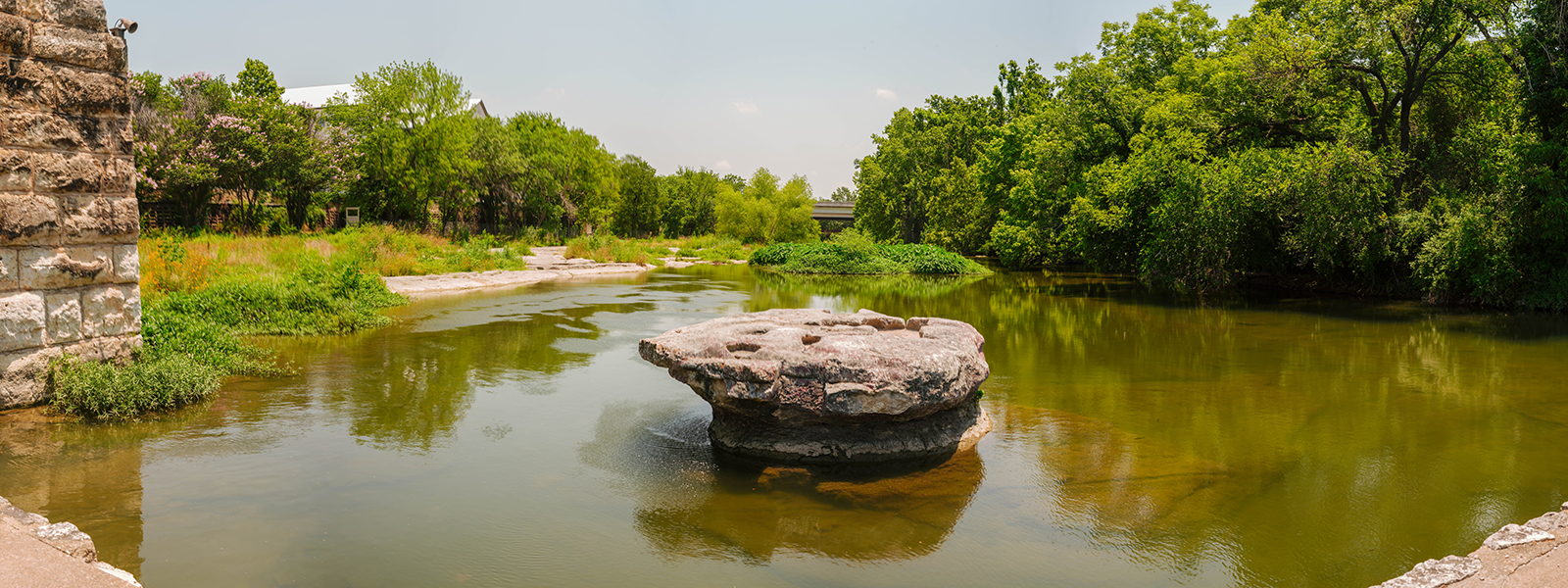
In 1851, on the banks of Brushy Creek, a small community was formed near a large, round rock located in the middle of the creek. This round rock marked a convenient low-water crossing for wagons, horses, and cattle. The first postmaster called the community Brushy Creek, but in 1854 the small settlement was renamed Round Rock in honor of this now famous rock. The “round rock” is located near Chisholm Trail Street in the middle of Brushy Creek. After the Civil War, Jesse Chisholm began to move cattle from South Texas through Round Rock, on the way to Abilene, Kansas. The route he established, which crossed Brushy Creek at the round rock, became known as the Chisholm Trail. Most of the old buildings, including the old Saint Charles Hotel, are still there today. This historic area is now called “Old Town.”
Downtown Round Rock is the site of the gunfight and subsequent capture (then death) of the nineteenth-century American train robber, Sam Bass, by a member of the Texas Ranger Division on July 19, 1878. The event is known locally as the “Sam Bass Shootout.” Bass is buried in Round Rock Cemetery located northwest of “Old Town” on Sam Bass Road.
Texas sculptor Jim Thomas was commissioned by the city of Round Rock, Texas, to create a 1.5 scale 22-figure bronze sculptural composition depicting life along the Chisholm Trail in the late 1800s. After the Civil War, the major source of income for Texans was cattle. Trail drivers, such as Jesse Chisholm, led their cattle to market in Abilene, Kansas, to be sold for high prices to the eastern markets. The Chisholm Trail was used from 1867 to 1884 and ran from Kansas south to the Rio Grande. The trail passed through Round Rock, Texas, at a specific spot at Brushy Creek, marked by the round limestone rock for which the city is named. It was a good crossing point for thousands of cattle. It is this location, the Crossing, that the commemorative park is located.
For more Round Rock history go to: A History Buff’s Guide to Round Rock – Round Rock TX (goroundrock.com)

